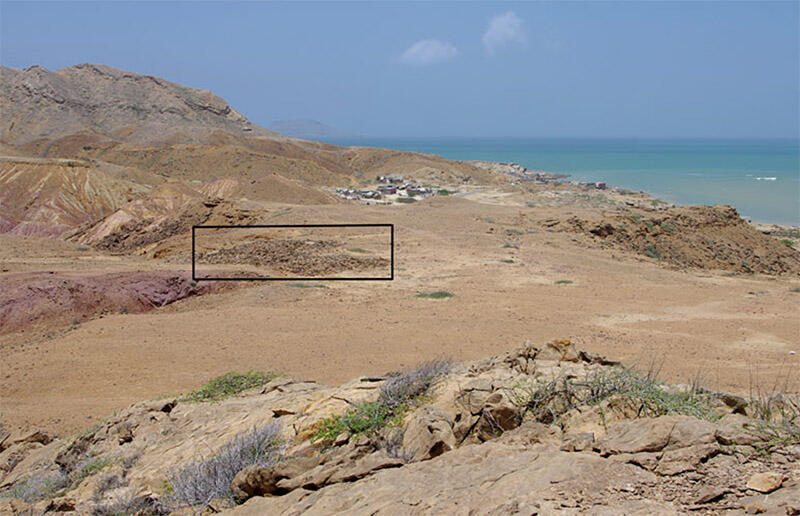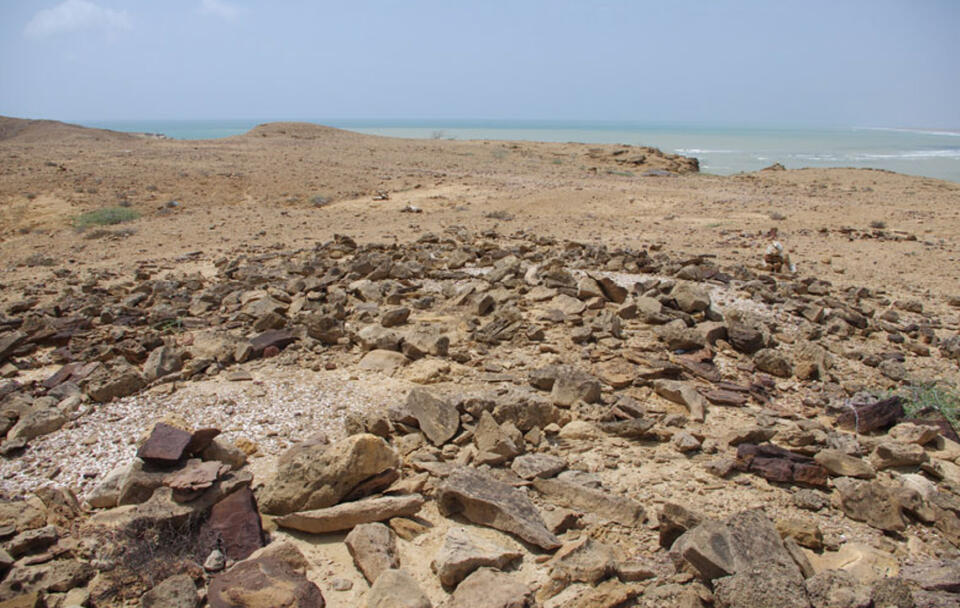Italian archaeologists have been critical to unearthing the distant human past in Sindh and Balochistan for many years. This paper describes in detail yet another important find which in the words of the authors is "the prehistoric settlement of Sonari (SNR-1). Sonari is the only Bronze Age fisher-gatherer village ever discovered along the northern coast of the Arabian Sea with rectangular stone structures and net sinkers. The site is so far unique, and very important for the study of the Bronze Age of a region located at the south-western edge of the spread of the Indus Civilisation, where different archaeological aspects from the Indian subcontinent, the Arabian/Persian Gulf and the Gulf of Oman interacted" (p. 2). This is "almost unknown" (p. 5) territory, even as earlier archaeologists have noticed frequent shell debris and other signs of habitation during earlier times.
SNR-1 "is composed of at least six rectangular rooms (or cabins) of different size delimited by limestone blocks" (p. 7), and given the kinds of shells worked on here, and a note from a British officer in the late 18th century who noted the production of lime from these shells to coat fishing nets, the authors "suggest that the SNR-1 shell heaps might be related to a similar activity that took place mostly during the Bronze Age" (p. 7).
The stone tools discovered, and in particular the variety of "net sinkers" worked stone and shell pieces used by fisher-gatherers to deploy nets, show similarities with those used by people in the Gulf and indeed elsewhere around the world in prehistoric times. Chert (flint) artefacts come from as far away as the Rohri Hills in northern Sindh. 'The general impression, based on the study of the knapped stone artefacts at present underway from the Lake Siranda sites in Las Bela, the Tharro Hills and Kot Raja Manjera, in Lower Sind, suggests that important technological changes took place at the turn of the Chalcolithic in the study region, when pressure technique was introduced for the manufacture of regular blades and bladelets and new, exotic raw materials started to be exploited for the first time during the [pre-Indus] Amri Culture period" (p. 35). Finally, some of pottery fragments at the site could be from Indus times if not earlier.
There is great detail including graphs and photographs in this paper, which reaches back into two decades of work by the Italian team along the coast. The authors conclude: "At present we have at our disposal more than radiocarbon dates, most of which are from T palustris and T telescopium samples. They show that mangroves flourished during the Holocene in virtually every estuary of freshwater courses in this part of the north Arabian Sea coast whenever suitable environmental conditions were available in term of salinity and temperature, attracting human groups that exploited their resources. Their late Holocene and sub-recent disappearance has been observed along the coasts of Sindh, Balochistan and the Persian/Arabian Gulf. This fact is connected with the fractionation and later disappearance of the Bronze Age Indus Civilisation that was caused by monsoon weakening and the establishment of arid conditions that started to prevail around the end of the third millennium cal BC" (p. 44).
Images: 1. Sonari: view of the terrace with the location of SNR-I (rectangles). 2. SNR-I, stone-walled structures filled with shells in the western part of the site




